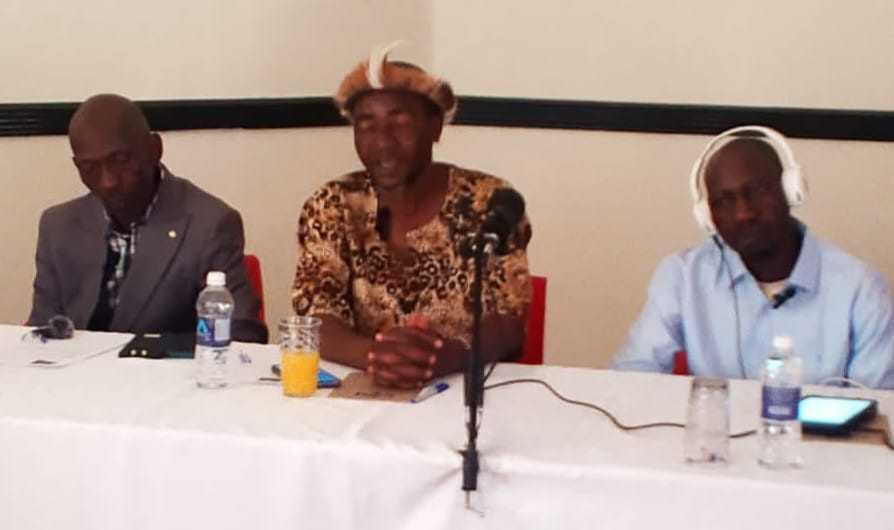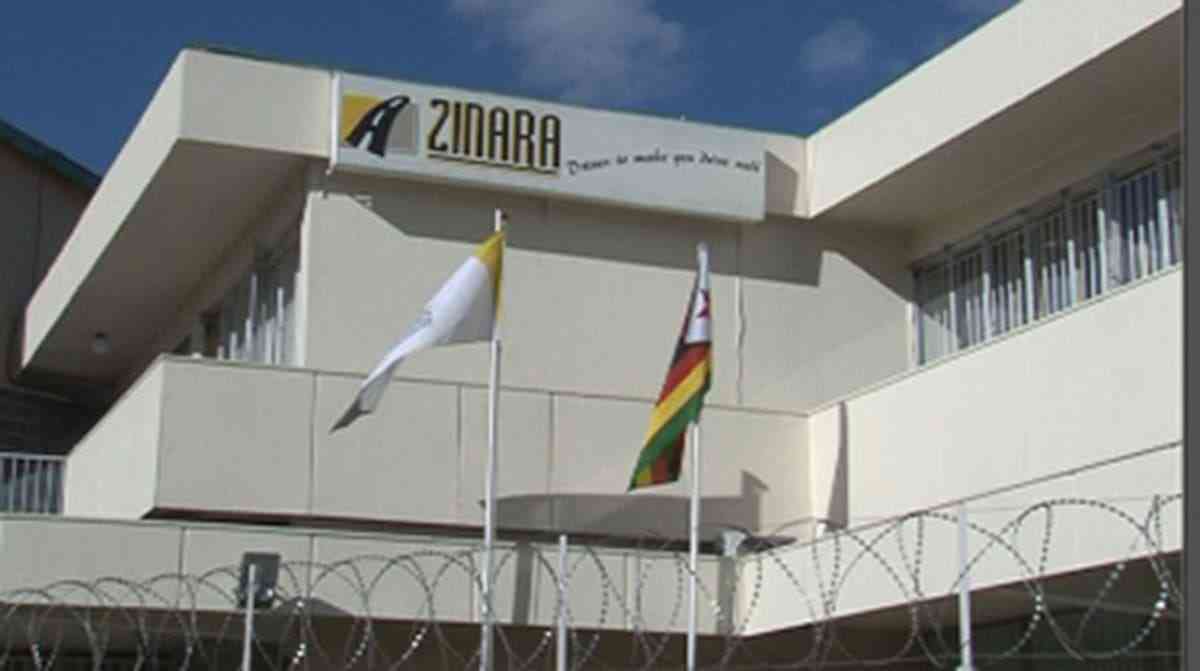
Great Zimbabwe, the ruined stone settlement brought to the attention of Western world by Karl Mauch in the late 19th Century, was the capital of a local Shona state, having reached its zenith in the 14th Century AD.
The white settlers had found that keeping the “mystery” alive by suggesting Rhodesia was the Ophir of the Ancients, not only helped drive tourism, but satisfied their own racist ideals in that the blacks were not sophisticated enough to build this great stone structure on their own.
For the myth to thrive, the Rhodesians had it that ruins were built by the Queen of Sheba, with King Solomon’s Mines in close proximity. Garlake, who has died aged 77, resigned his post as Inspector of Monuments in 1970 when it was demanded — in the Rhodesian Parliament no less —that he give an “equal” platform to the “theory” that Great Zimbabwe was built by “light skinned people”.
According to the member for Fort Victoria District, Colonel George Hartley OBE, the “theory” that Great Zimbabwe was erected by indigenous people was “nothing but pure conjecture”.
Where previous archaeologists hid to some degree behind scientific obscurity to make their case for the construction by the local African people, Garlake was unequivocal in his findings:
“Great Zimbabwe must be recognised for what it is — a building of peculiar size and imposing grandeur, the product of two or three centuries of development of an indigenous stone-building technique, itself rooted in long traditions of using stone for field walls, building platforms and terraces. “The structure reflects the economic dominance and prestige of a small oligarchy that had arisen within an Iron Age subsistence economy.”
Peter Storr Garlake was born in Cape Town on January 11 1934, the son of a soldier, “Dooley” Garlake, later Major-General, Commander of the forces in the Federation of Rhodesia & Nyasaland. His mother Catherine, a South African of Scottish extraction, had a passion for animals and was instrumental in setting up the SPCA in Rhodesia.
After completing senior school at St Georges College in Harare, Garlake went on to read architecture at the University of Cape Town from 1952-1957. After college, he left for England, finding a job as an architect in London within two days of arriving.
- Chamisa under fire over US$120K donation
- Mavhunga puts DeMbare into Chibuku quarterfinals
- Pension funds bet on Cabora Bassa oilfields
- Councils defy govt fire tender directive
Keep Reading
Joining the Catholic Order was also a consideration, and he was drawn to a Carmelite monastery at Aylesford in Kent, where he participated in processions with relics of the revered local saint Simon Stock.
Enrolling at UCL’s Institute of Archaeology in London in 1961 for a post graduate diploma, he met his future wife Margaret, who was studying archaeological conservation.
They married in 1962, the year he was awarded a Nuffield Research Studentship, which took him to the British Institute in Eastern Africa in Dar es Salaam.
Here Garlake studied the architecture and archaeology of medieval Swahili coast towns after which he published The Early Islamic Architecture of the East African Coast (1966). However, he went on to lecture at the History Department at the University of Zimbabwe in 1984, a year before a full archaeology programme was set up.While regarded as highly amusing in his private life, professionals found him “prickly”, especially when it came to criticism from amateur and racist quarters, and loony nationalists after 1980. He received his doctorate in archaeology from SOAS in 1992.
He was fond of ‘dzimbahwes’— houses of stone
A year before UDI in Rhodesia in 1965, Garlake was appointed Inspector of Monuments. In this position, he visited many of the ruined settlements or dzimbabwes (“houses of stone”) that cover much of modern Zimbabwe, excavating two of the smaller centres.
He also excavated three ancient Portuguese settlements in modern Zimbabwe — Dambarare, Maramuca and Luanze — which had been occupied by the Portuguese until they were overrun by Changamire in the late 17th Century.
However, finding his intellectual integrity increasingly compromised as the racist politics of the settler regime impinged on his domain, he resigned and left the country in 1970.
Having been offered a post at the University of Ife in Nigeria, Garlake led two major excavations of sites with lifelike terracotta heads (now on display in the British Museum).
During this time he also completed his Great Zimbabwe manuscript.
“The major question posed over the years — was Great Zimbabwe the unaided work of indigenous Africans — has created lasting controversy, and probably no other prehistoric site has aroused such strong, widespread and often bizarre emotional responses.”
Garlake’s book brought together the work of early antiquarians and archaeologists such as Randall McIver, ElizabethCaton-Thompson, Roger Summers and Keith Robinson. Being free of the imaginative theories of later archaeological symbolic, Garlake’s work remains the definitive work on the facts of the subject.
From 1976 to 1981, Garlake held an appointment as Lecturer in the Department of Anthropology at University College London during which time he carried out excavations at Manekweni, a stone-walled settlement in Mozambique.
Garlake returned to Zimbabwe after Independence and was reportedly disappointed at not being offered the top post in the National Museums & Monuments.
However, he went on to lecture at the History Department at the University of Zimbabwe in 1984, a year before a full archaeology programme was set up. After his losing a complete manuscript on Zimbabwean Archaeology to a fire at his Borrowdale homestead in the late 1980s, Garlake shifted his focus again: this time to Zimbabwe’s diverse rock art. Building on his earlier work The Painted Caves (1987), it was to culminate in his 1995 treatise, The Hunter’s Vision.
This he regarded as his magnum opus and it established Zimbabwean rock art in a field of its own. Garlake popularised it with lecture tours to the US and Europe where he would speak from a lifelike cave of paintings that had been meticulously traced and re-created on a paper mache wall. Drawing on many of the symbolic interpretations of Prof David Lewis-Williams and the trance experience, Garlake went further to draw his own conclusions.
He said there was more to the shamanism of the San people as there was something deeper in the art when it came to the wider religious experience. He hypothesized that “formlings” – oval-shaped images unique to Zimbabwe rock art – were an abstract representation of the physical manifestation of “potency”, which he argued guides the worldview of San people.
Following publication of The Hunter’s Vision, he took up rose growing, delivering his produce to florists around Harare. Increasingly he started to divide his time between Harare and London, and published his final book, Early Art and Architecture of Africa, in 2002. An avid theatre goer, Garlake enjoyed visiting cities in Europe and the Middle East, where he fed his love of Islamic architecture. Believing “what you write is your memorial”, Garlake opted for “green burial” and no ceremony. He is survived by sister Carole, his wife Margaret, three children and six grandchildren.
Peter Storr Garlake, archaeologist and architect. Born January 11, 1934. Died December 2, 2011











